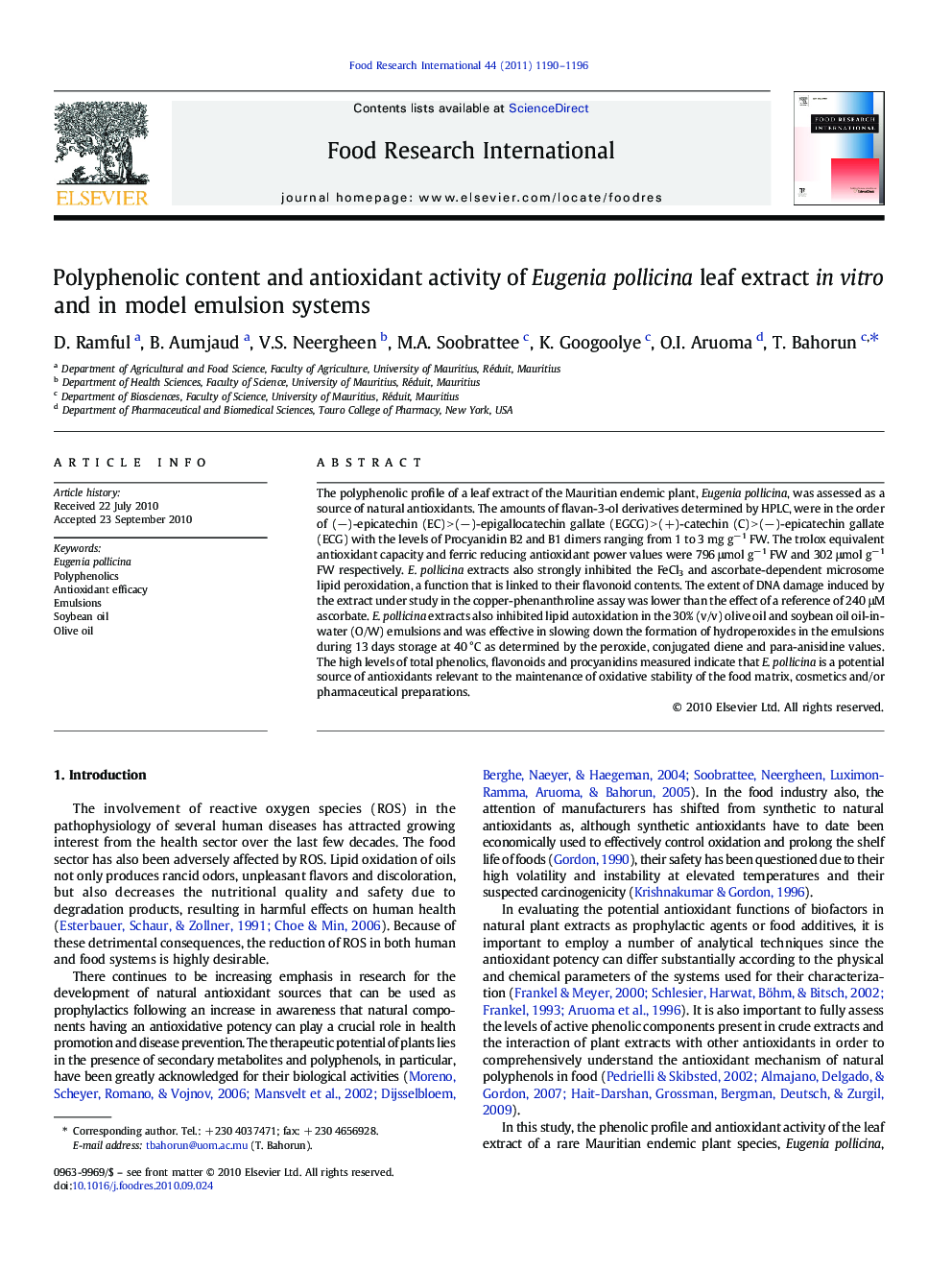| Article ID | Journal | Published Year | Pages | File Type |
|---|---|---|---|---|
| 6399723 | Food Research International | 2011 | 7 Pages |
Abstract
The polyphenolic profile of a leaf extract of the Mauritian endemic plant, Eugenia pollicina, was assessed as a source of natural antioxidants. The amounts of flavan-3-ol derivatives determined by HPLC, were in the order of (â)-epicatechin (EC) > (â)-epigallocatechin gallate (EGCG) > (+)-catechin (C) > (â)-epicatechin gallate (ECG) with the levels of Procyanidin B2 and B1 dimers ranging from 1 to 3 mg gâ1 FW. The trolox equivalent antioxidant capacity and ferric reducing antioxidant power values were 796 μmol gâ1 FW and 302 μmol gâ1 FW respectively. E. pollicina extracts also strongly inhibited the FeCl3 and ascorbate-dependent microsome lipid peroxidation, a function that is linked to their flavonoid contents. The extent of DNA damage induced by the extract under study in the copper-phenanthroline assay was lower than the effect of a reference of 240 μM ascorbate. E. pollicina extracts also inhibited lipid autoxidation in the 30% (v/v) olive oil and soybean oil oil-in-water (O/W) emulsions and was effective in slowing down the formation of hydroperoxides in the emulsions during 13 days storage at 40 °C as determined by the peroxide, conjugated diene and para-anisidine values. The high levels of total phenolics, flavonoids and procyanidins measured indicate that E. pollicina is a potential source of antioxidants relevant to the maintenance of oxidative stability of the food matrix, cosmetics and/or pharmaceutical preparations.
Related Topics
Life Sciences
Agricultural and Biological Sciences
Food Science
Authors
D. Ramful, B. Aumjaud, V.S. Neergheen, M.A. Soobrattee, K. Googoolye, O.I. Aruoma, T. Bahorun,
